
Recession Proof – Step 6
Whew hoo! We’re over the halfway mark in our quest to show you how to create a Recession-Proof marriage and household. Yesterday, I did a quick recap of the first four steps and outlined the fifth. If you didn’t get a chance to review it, check it out here. Today, we’re rolling out the sixth step in the plan to shield your family from this current economy.
STEP SIX: Redefine the American Dream
Last year, I began to wonder about the so-called American dream. The more I listened to people talk about it, the more I became convinced that The American Dream, as it’s currently described, is really just The American [in] Debt.
I began to think about how the American dream was first described and was intrigued as to how much it’s changed over the past century to now include a house with a white picket fence and a hefty 30-year mortgage to accompany it.
Recently, Keith and I watched A Raisin in the Sun. I’d never had the opportunity to see the critically-acclaimed play so the onscreen production was the next best thing. I don’t know if you’ve seen this movie but the premise is a poor African-American family is torn apart by a $10,000 life insurance policy from the deceased husband of the matriarch. Her only son spends most of the movie lobbying to take the check, the moment it arrives, and invest it in their “future.”
By future, I mean he wanted to invest it in a scheme that seemed promising. Infighting within the family ensues over their differences in opinion regarding how the matriarch of the family should spend the money once the postman delivers the check.
By the end of the movie, the matriarch has relented and hesitantly gives her son $6,500, of which $3,000 is supposed be put in a bank for his sister’s college education. Unfortunately, he “invests” the entire amount and within days learns one his new “business partners” was a con artist and skipped town with the money. In spite of all that, the family somehow finds solace in the fact that the first $3,500 was used as a down payment on a home they all moved into in the final scenes of the movie.
Once the credits began to roll, I turned to Keith and said, “That was depressing.” Keith was a little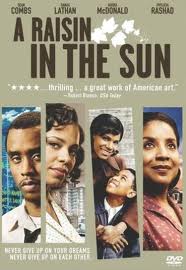 surprised because this is an American classic and that’s usually not the reaction of most (I’d imagine) because the movie has a “happy” ending. The family is all hugs and laughter as they begin moving into their new home. But all I could think about was they were now in debt.
surprised because this is an American classic and that’s usually not the reaction of most (I’d imagine) because the movie has a “happy” ending. The family is all hugs and laughter as they begin moving into their new home. But all I could think about was they were now in debt.
Yes, their apartment wasn’t ideal but why not just get a slightly nicer apartment? Instead, they move into a home in which they cannot afford the monthly payments. The daughter-in-law exclaims she’ll work 20 hours a day, if she has to, in order to help pay the mortgage. The matriarch of the family, who retired at the beginning of the movie, would now need to return to work to also help pay the mortgage.
I told Keith, “This isn’t a happy ending. They’re all in debt!” And thus renewed my thought that The American Dream had somewhere along the years lost its meaning and now is the time for us to return to the basics. Although step six is to “Redefine the American Dream,” it could as easily be titled, “Return to the Original American Dream.” That just wasn’t as catchy.
Let me ask you a question. What do you think of when you think of The American Dream? If a house with a white picket fence enters your mind, or home ownership at all for that matter, then you and I are in the same boat: completely brainwashed.
I am a self-proclaimed research junkie so recently I began looking at the American Dream and was reminded of the enormous gift I was given simply by the latitude and longitude by which I was born:
The American Dream is a national ethos of the United States in which freedom includes a promise of the possibility of prosperity and success. In the definition of the American Dream by James Truslow Adams in 1931, “life should be better and richer and fuller for everyone, with opportunity for each according to ability or achievement” regardless of social class or circumstances of birth. The idea of the American Dream is  rooted in the United States Declaration of Independence which proclaims that “all men are created equal” and that they are “endowed by their Creator with certain inalienable Rights “including “Life, Liberty and the pursuit of Happiness.” [i]
rooted in the United States Declaration of Independence which proclaims that “all men are created equal” and that they are “endowed by their Creator with certain inalienable Rights “including “Life, Liberty and the pursuit of Happiness.” [i]
Historian James Truslow Adams, who popularized the phrase “American Dream” in his 1931 book Epic of America said about the Dream, “The American dream, that has lured tens of millions of all nations to our shores in the past century has not been a dream of merely material plenty, though that has doubtlessly counted heavily. It has been much more than that. It has been a dream of being able to grow to fullest development as man and woman, unhampered by the barriers which had slowly been erected in the older civilizations, unrepressed by social orders which had developed for the benefit of classes rather than for the simple human being of any and every class.”
Martin Luther King, Jr., in his “Letter from a Birmingham Jail” (1963) rooted the civil rights movement in the black quest for the American Dream: “We will win our freedom because the sacred heritage of our nation and the eternal will of God are embodied in our echoing demands. . . . when these disinherited children of God sat down at lunch counters they were in reality standing up for what is best in the American dream and for the most sacred values in our Judeo-Christian heritage, thereby bringing our nation back to those great wells of democracy which were dug deep by the founding fathers in their formulation of the Constitution and the Declaration of Independence.”
Over the past few years I’ve heard so many say, “The American Dream is over,” “It’s been lost forever,” and other similar sentiments. But how is that thought process even possible? If the American Dream is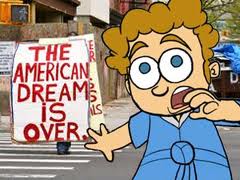 about life, liberty and the pursuit of happiness, then why would that change because the economy shifts downward? If freedom of expression, religion, speech and all the other inalienable rights of human beings, as defined by our Declaration of Independence, are still fully intact, what is it we’ve actually lost?
about life, liberty and the pursuit of happiness, then why would that change because the economy shifts downward? If freedom of expression, religion, speech and all the other inalienable rights of human beings, as defined by our Declaration of Independence, are still fully intact, what is it we’ve actually lost?
The answer is simple: Most of America figured out they weren’t actually free. It was just a false perception. We discovered the Proverb that tells us, “…the borrower is slave to the lender” continues to ring true. Let me see if I help make sense of this all in the simplest of terms.
Here’s a large part of what happens in a recession: 1) Money gets tight; banks stop extending loans and credit lines; 2) Credit limits are drastically reduced; 3) Home equity lines of credit are immediately frozen or reduced; 4) Housing market plummets.
Do you see a trend between each of the items listed above which are indicative of a recession? Everyone’s living or functioning on borrowed dollars. Businesses requiring lines of credit to continue operating suddenly find themselves needing to live on their actual income. Consumers who have barely been getting by month-to-month on their credit cards suddenly find that well has dried up and they too must begin living within their actual means.
What happened in 2008 was bound to happen at some point. Everyone, including corporations, realized 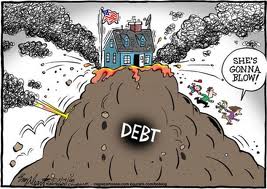 they were overextended and living above their means. Unfortunately, since the market relies on consumers using credit (and paying interest) and consumers no longer have credit, that is quite the predicament and a recipe for disaster when attempting to climb out of a global recession.
they were overextended and living above their means. Unfortunately, since the market relies on consumers using credit (and paying interest) and consumers no longer have credit, that is quite the predicament and a recipe for disaster when attempting to climb out of a global recession.
So that’s the bad news. Here’s the good news. Do you want to know how to pull your family out of this recession? How to rise above this bad economy? Just refuse to participate in it. Just because the country is in a recession doesn’t mean your family has to be a part of it. So how do you get out of it? It’s simple. Resolve to no longer be a slave to the lender. Determine to stop being a borrower. Live on what you make and not a penny more.
Did you know that most 30-year fixed home loans are set up so the first 15 years you’re solely paying interest? No, really. When a person finishes paying off their 30-year loan, in most instances, that home has cost them more than double the actual purchase price of the home. So for a $350,000 home, the buyer ends up paying more than $700,000. This is one of the reasons Robert Kiyosaki in his book, Rich Dad Poor Dad, vigorously challenges the argument that a home is an asset if there is a mortgage attached. Something similar happens when you “buy” a car on credit.
When you decide to put a $2,500 big screen television on your credit card, do you know how much that television is really costing you? Let’s just say, if you put it on a credit card with an interest of 18% and make the minimum payments every month, it will take you roughly 28 years to pay off that television. For your $2,500 purchase, you would have ended up paying a total of $8,397 by the time it’s all said and done and $5,897 of that would have been in interest payments.
And did you know that most of us have been brainwashed (literally) into using credit as a regular part of our lives? There are psychologists who have worked with corporations and advertising firms for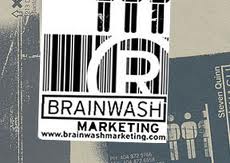 decades to help them understand the best way to tap into the emotions of an individual to get them to forgot reason and to satisfy their “wants” immediately. We’ve been taught to require instant gratification.
decades to help them understand the best way to tap into the emotions of an individual to get them to forgot reason and to satisfy their “wants” immediately. We’ve been taught to require instant gratification.
So how do we hop off this rotating hamster wheel? The first five steps in this plan to create a recession-proof household is a good start. And this sixth step requires learning to live below your means. Rejecting the version of the American Dream that involves living in debt, as a slave to the lender. Creating an American Dream for your family, or just returning to the original dream that involved life, liberty, the pursuit of happiness…and freedom.
Taking your life back from creditors can be tough, depending on how long you’ve been living a “charged up” lifestyle. But it’s absolutely possible and it can begin today. But as we discussed in Step One, Two, and Three of this plan, it involves having the right mindset. Being more concerned about your family’s happiness and freedom than image or what other’s might say or think about you.
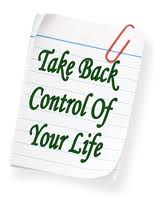 The best way to not participate in a recession is to take away the ability of other’s to control any portion of your life. Think about it this way. Do you think people who were living below their means when the recession began, weren’t using credit cards or any form of credit, have been debilitated by this recession? They may have been affected, as that is normal when you’re living in a society that’s ailing, but has it altered their entire life? Has it turned it upside down?
The best way to not participate in a recession is to take away the ability of other’s to control any portion of your life. Think about it this way. Do you think people who were living below their means when the recession began, weren’t using credit cards or any form of credit, have been debilitated by this recession? They may have been affected, as that is normal when you’re living in a society that’s ailing, but has it altered their entire life? Has it turned it upside down?
Begin tightening up your belt today. As I mentioned yesterday, tracking your expenses and determining an allowance based on needs vs. wants is a good place to start. Beginning to live below your means builds upon that. And if those two principles aren’t enough to get you off that hamster wheel, “Sell! Sell! Sell!”
On Friday, we’ll be talking about giving up some stuff. Are you still holding on to things that could free you if you’d simply let them go? I hope you’ve already made the decision to stop participating in this bad economy and I’m determined to help you, your marriage and your household become Recession-Proof.
Until Monday…make it a great weekend!
Comments: With more than 15,000 Happy Wives Club members already actively engaged on our Facebook page, what better place to share your thoughts? Join me there and let’s continue the conversation: Happy Wives Club Facebook
[i]Sources for the history of the American Dream include: Library of Congress. American Memory. “What is the American Dream?, “Rethinking the American Dream,” a Vanity Fair article by David Kamp, The Virtues of Liberalism by James T. Kloppenberg, and Wikipedia.org.
Fawn Weaver
Latest posts by Fawn Weaver (see all)
- Top 5 Regrets From the Dying: An Inspirational Article For Us All - November 12, 2017
- How to Protect Your Marriage During Challenging Times - October 19, 2017
- 5 Unique Ways to Make Your Man Feel Special in 5 Minutes or Less - September 16, 2017
 Related Posts
Related Posts
Top 5 Regrets From the Dying: An Inspirational Article For Us All
How to Protect Your Marriage During Challenging Times
5 Unique Ways to Make Your Man Feel Special in 5 Minutes or Less
 Recent Posts
Recent Posts
Top 5 Regrets From the Dying: An Inspirational Article For Us All
How to Protect Your Marriage During Challenging Times
5 Unique Ways to Make Your Man Feel Special in 5 Minutes or Less





